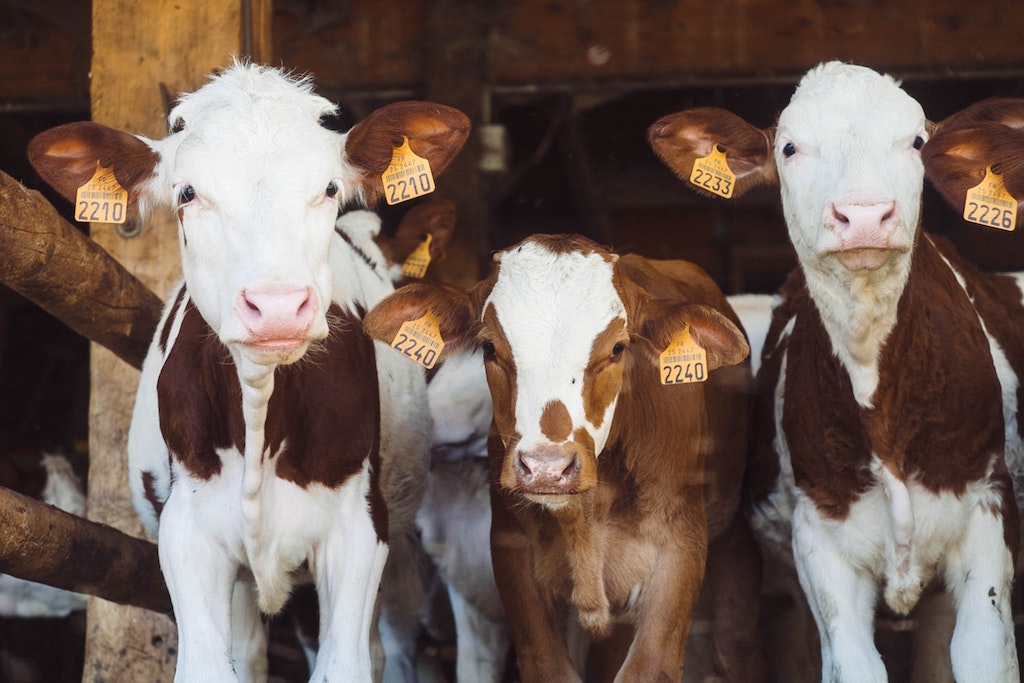GHGs From Meat Production Are Double Those From Plant-Based Foods, Study Finds
4 Mins Read
Global greenhouse gas emissions from from animal-based foods such as beef and dairy are twice as high as those of plant-based foods, according to a new study published this week on Nature Food. The entire food production system, which includes crop cultivation, livestock production, irrigation, the use of fertilizers and pesticides, and transporting food, produces roughly 17.3 billion tons of greenhouse gases (GHGs) per year globally. Nearly 60% of those GHGs correspond to the production of animal-based food, compared to 29% coming from plant-based foods.
The study’s findings reaffirm information we already have about the enormous negative impacts of animal-based food production on planetary health. Beef, in particular, accounts for roughly a quarter of emissions, according to the study.
Researchers who authored the study estimated GHGs for 171 crops and 16 animal products, pulling data from over 200 countries. Overall, food systems account for 35 percent of global anthropogenic GHG emissions, according to the study.

Highest emissions around the world
While South and Southeast Asia (SSEA) has the greatest food production-related emissions (23%), that region’s emissions from plant-based foods are higher than those from animal-based foods. South America (SA), meanwhile, has the second-highest emissions (20%), and the highest emissions from animal-based food production. China and Mongolia (CM) followed SA and SSEA as being a region with the highest emissions from animal-based foods.
Looking specifically at countries, the study finds that China, Brazil, the United States, and India lead in terms of GHG emissions from animal-based food production. Additionally, “beef and cow milk are the commodities that contribute most to the largest emitting regions and countries.”
These rankings shouldn’t surprise too much. China is the world’s largest consumer of meat, and for some products, such as pork, it is also the world’s largest producer. Elsewhere, subsidiaries for animal agriculture companies soared last year in the United States order to prop up the animal-based food production industry: Subsidies and bailouts in the U.S. doubled year-on-year from US$20 billion to more than US$50 billion in 2020.

Meat production on the rise
The study comes at a time when the United Nations (UN) estimates that we will need to increase plant- and animal-based food production by 70% (compared to 2009 levels) by 2050 in order to feed a global population that has quadrupled over the last century and continues to rise. Because of that, along with changing demographics due to economic growth, meat consumption is on the rise. Meat production is expected to rise by 40 million tons to reach 366 million tons annually by 2029.
However, one noteworthy finding in the study is that much of the world’s cropland — which contributes to deforestation and other environmental issues — is actually used to feed livestock, not people. As demand for meat rises, more land and input will be needed to raise more livestock, which will in turn emit more GHGs and aggravate the existing climate crisis.

Measuring GHGs to mitigate climate
A paper published last year warned that without drastic changes to our food system, climate goals outlined in the Paris agreement will stay “out of reach.” That’s true even if we were to outright end our reliance on fossil fuel overnight.
One of the main aims of the Nature Food study is to provide governments and policymakers with better ways to measure the emissions from global food production.
“Developing climate mitigation strategies will require estimates of all major GHG emissions (for example CO2, CH₄, and N₂O) from the production and consumption of total individual plant- and animal-based food from all food-related subsectors , such as land-use change and farmland activities, at local, regional, and global scales,” the study notes.
The goal of these estimates, it continues, is to assist policymakers with building a science-based framework that can help them assess climate change mitigation strategies and in doing so hopefully enact real change in our global food system.
Lead image courtesy of Unsplash.



